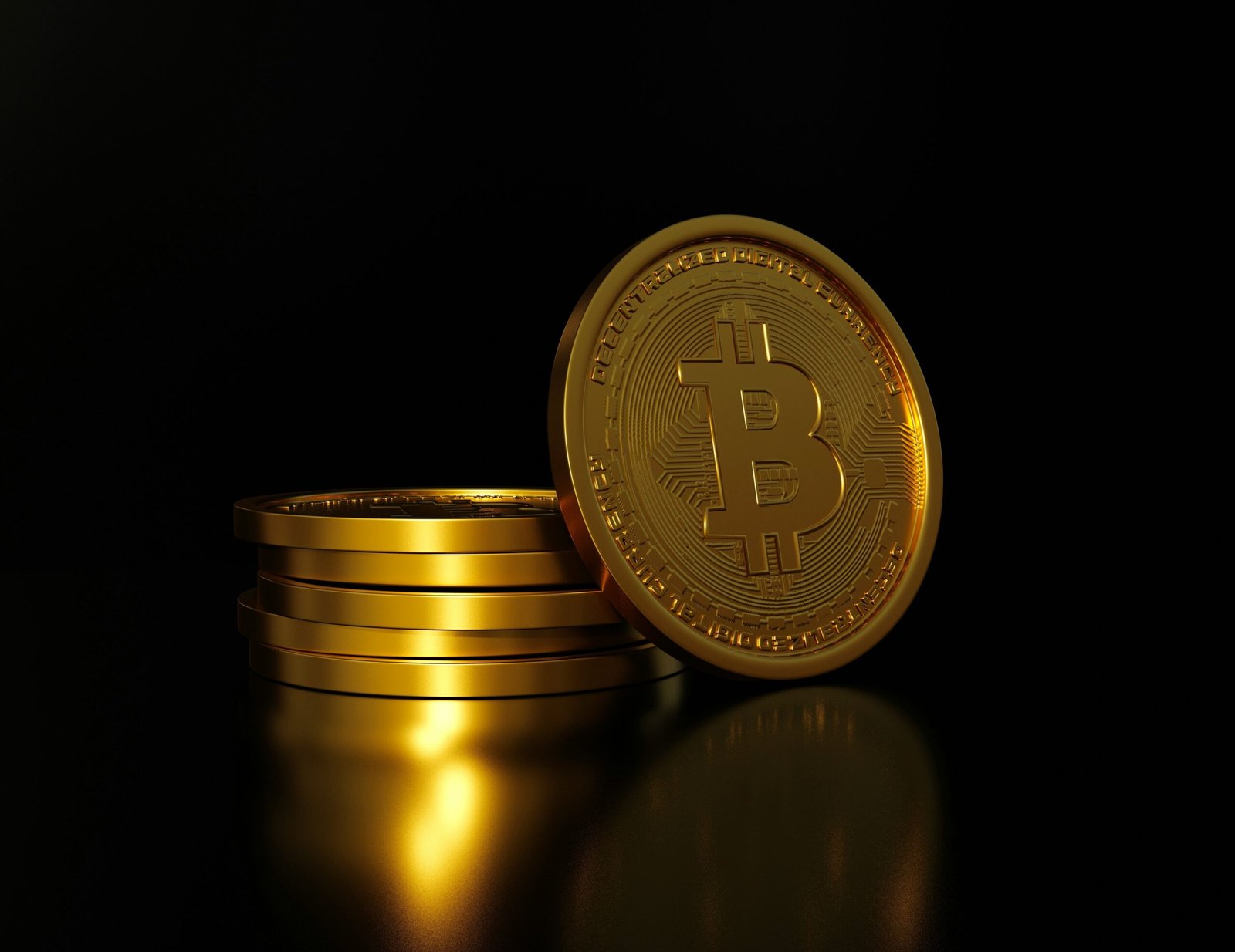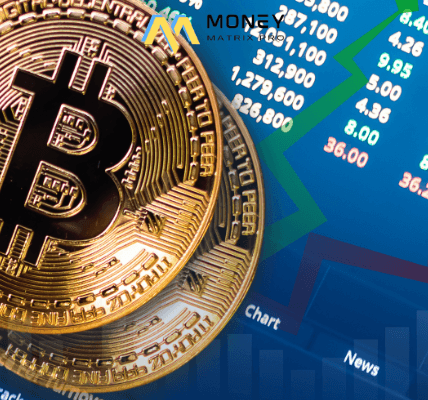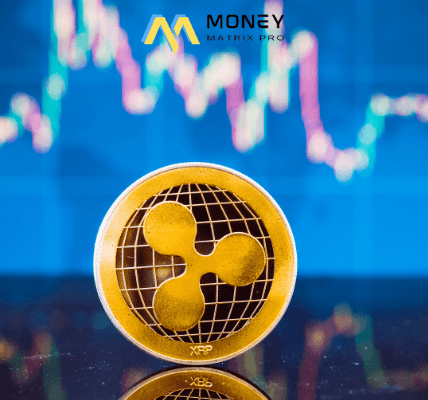Origins of DeFi
The origins of decentralized finance (DeFi) can be traced back to the inception of Bitcoin, which emerged as the first decentralized digital currency in 2009. Created by an individual or group using the pseudonym Satoshi Nakamoto, Bitcoin was designed to operate without the need for a central authority, thus allowing peer-to-peer transactions on a blockchain. This innovation highlighted the limitations of traditional financial systems, which typically relied on intermediaries such as banks and payment processors to facilitate transactions. With Bitcoin, users could send and receive funds directly, eliminating the need for trust in these intermediaries.
Traditional financial services often face challenges such as high transaction fees, prolonged processing times, and barriers to access, particularly for underserved populations. These limitations prompted the exploration of alternatives that could democratize finance and enhance accessibility for all users. As the blockchain technology that underpins Bitcoin matured, developers began to realize its potential for creating a broader range of financial services that operate in a decentralized manner.
The limitations of centralized financial systems have been seen in various crises, where institutions failed to meet individuals’ needs or acted in ways that compromised consumers’ interests. These events underscored the necessity for a financial ecosystem that could function independently of centralized control. Consequently, within the years following Bitcoin’s introduction, a growing number of blockchain-based projects emerged, each contributing to the evolution of DeFi. These initiatives aim to build protocols and platforms designed for lending, borrowing, trading, and investing, all without traditional intermediaries. As a result, the DeFi movement symbolizes a shift towards a more open, inclusive, and efficient financial system that aligns with the fundamental principles of cryptocurrency and blockchain technology.
Ethereum’s Smart Contracts: A Catalyst for Programmable Money
The introduction of Ethereum in 2015 marked a significant turning point in the realm of finance, particularly through the implementation of smart contracts. These self-executing contracts, with the terms of the agreement directly written into code, have revolutionized many aspects of financial transactions and agreements. By eliminating intermediaries, Ethereum’s smart contracts provide a decentralized framework that enhances security and efficiency, allowing for programmable financial activities to occur seamlessly.
Smart contracts automate various functions within the decentralized finance (DeFi) ecosystem, enabling a wide range of applications, such as lending, borrowing, and trading without human intervention. This automation not only streamlines processes but also diminishes counterparty risk. Traditional financial systems often rely on third-party agents to facilitate transactions, which can introduce vulnerabilities. In contrast, Ethereum’s infrastructure allows for a trustless environment, where the code ensures that all parties fulfill their obligations, thus bolstering trust among users.
The programmability of money that comes with Ethereum’s smart contracts has paved the way for innovative platforms and tools that cater to a diverse audience. Decentralized applications (dApps) built on Ethereum exploit these smart contracts to create tailored financial services, adjustable to user needs while remaining transparent and accessible. This shift toward programmable money not only enhances user experience but also opens the door for new economic opportunities, enabling individuals and businesses to interact directly without reliance on centralized authorities.
Furthermore, the versatility of Ethereum’s smart contracts has sparked widespread interest and investment within the DeFi space, attracting a multitude of developers and entrepreneurs seeking to harness their potential. As the DeFi ecosystem continues to grow, it is evident that Ethereum’s innovative approach serves as a crucial catalyst for the evolution of finance, driving us toward a more decentralized and inclusive financial landscape.
Early DeFi Projects: Pioneers of Decentralized Lending and Trading
The landscape of decentralized finance (DeFi) began to take shape with the emergence of early projects that pioneered key concepts of lending and trading. Among these pioneering platforms, MakerDAO and Uniswap stood out as foundational elements in the establishment of decentralized financial systems. Their innovative approaches have not only influenced subsequent DeFi developments but have also highlighted the potential of blockchain technology in transforming traditional finance.
MakerDAO is best known for creating a decentralized lending system based on smart contracts on the Ethereum network. It allows users to collateralize their cryptocurrency assets to mint the stablecoin DAI, which is pegged to the US dollar. This model of over-collateralization ensures a level of stability and trustworthiness, allowing for automated and transparent lending processes. By facilitating loans without intermediaries, MakerDAO challenged conventional banking frameworks, making lending accessible to a broader audience. Additionally, its unique governance structure empowered token holders to influence the protocol’s direction, fostering community involvement in financial decision-making.
Similarly, Uniswap introduced an innovative approach to trading through its decentralized exchange (DEX) model. By employing an automated market maker (AMM) mechanism, Uniswap eliminated the need for order books typically used in traditional exchanges. Instead, liquidity providers could contribute to liquidity pools, earning fees as traders executed transactions. This model allowed users to trade tokens directly from their wallets while maintaining full control over their assets, thereby minimizing the risks associated with centralized exchanges. Uniswap’s success exemplified the potential of decentralized trading ecosystems, setting the stage for the proliferation of other DEX platforms that followed.
In essence, the contributions of MakerDAO and Uniswap have catalyzed the growth of DeFi, illustrating the opportunities inherent in decentralized lending and trading. Their foundational concepts continue to serve as cornerstones for future innovations within the DeFi space, driving the evolution of financial transactions toward a more inclusive and accessible model.
The Rise of DeFi: 2020 and Beyond
The summer of 2020 marked a pivotal moment in the evolution of decentralized finance (DeFi), as the sector witnessed an explosive growth characterized by rapid user adoption and innovative practices that attracted widespread attention. This period, often referred to as the “DeFi summer,” saw various DeFi protocols emerge, propelling the concept of decentralized finance into the mainstream financial discourse. The allure of high yields and the potential for democratizing access to financial services catalyzed a surge of interest from both retail and institutional investors.
One notable trend during this time was the rise of yield farming, a practice that enabled users to earn passive income by providing liquidity to decentralized exchanges and lending platforms in exchange for rewards. Users were incentivized to maximize their returns by strategically shifting their assets across various platforms, which resulted in significant liquidity inflow into DeFi protocols. This newly found flexibility in asset management not only enhanced user experience but also illustrated the potential of smart contracts in automating finance without the need for traditional intermediaries.
Key events, such as the launches of leading projects like Compound, Uniswap, and Aave, played a critical role in solidifying the stature of DeFi. These decentralized platforms not only provided borrowers and lenders with a more efficient way to conduct transactions but also showcased the value of permissionless financial systems. Despite challenges such as smart contract vulnerabilities and governance issues, the enthusiasm surrounding DeFi remained unabated, with various developers and entrepreneurs continuously innovating to expand the landscape.
This period ultimately reaffirmed DeFi’s potential as a transformative financial solution, paving the way for further development and mainstream acceptance in the years that followed. As the community grew and evolved, so too did the applications and use cases for decentralized finance, setting the stage for a broader revolution in financial services.
Emergence of Automated Market Makers (AMMs)
The introduction of Automated Market Makers (AMMs) has significantly transformed the decentralized finance (DeFi) landscape, enhancing both accessibility and liquidity for traders. Unlike traditional exchanges that rely on order books to facilitate trades, AMMs use smart contracts to create liquidity pools where users can buy and sell tokens directly. Prominent platforms such as Uniswap and SushiSwap epitomize this innovative model, allowing participants to engage in trading activities without the need for a centralized intermediary.
AMMs operate by incentivizing users to contribute their assets to liquidity pools, thereby ensuring that there are sufficient funds available for trading. In return for their contributions, liquidity providers earn a portion of the trading fees generated by the platform. This system democratizes the trading process, as anyone can become a liquidity provider and earn rewards, thus eliminating barriers that traditionally restricted access to financial markets.
The impact of AMMs on liquidity is profound. Not only do they enable seamless token swaps, but they also significantly reduce slippage, which is the difference between the expected price of a trade and the executed price. By maintaining a constant price curve based on the ratio of assets within the pool, AMMs help stabilize prices during trading, fostering a more predictable environment for users. Additionally, the ease of depositing and withdrawing tokens into and from liquidity pools makes participating in the DeFi ecosystem more appealing to a broader audience.
Furthermore, the advent of AMMs has paved the way for innovative trading strategies and products within the DeFi sector. The integration of yield farming and other financial instruments has led to the emergence of numerous opportunities for profit generation, drawing in both novice and experienced traders alike. This evolution signifies a pivotal moment in the journey of decentralized finance, making trading more efficient and inclusive in the burgeoning digital economy.
Growth in Total Value Locked (TVL) in DeFi
Total Value Locked (TVL) has emerged as a fundamental metric for gauging the health and popularity of decentralized finance (DeFi) platforms. Essentially, TVL reflects the aggregate capital held within DeFi applications, indicating how much value users have committed to these platforms. As of late 2023, TVL in the DeFi space has experienced exponential growth, attracting attention from both investors and developers alike. This increase signifies not just the proliferation of DeFi products but also a growing trust in the technology backing them.
The rise in TVL can be attributed to several key factors. First and foremost, the innovation of new financial products and services within the DeFi ecosystem has created a diverse array of options for users. From decentralized exchanges to lending platforms and yield farming opportunities, these offerings have enabled individuals to earn passive income and access financial services previously limited to traditional banking. As the variety of ways to deploy capital has expanded, so too has the propensity for users to lock their assets into these protocols.
Importantly, the implications of growing TVL reach further than mere numbers. For developers, growing TVL can lead to greater investment in platform enhancements and innovations, as well as an opportunity to attract institutional investors. For users, a rising TVL denotes a more secure environment, as larger locked amounts imply a solid commitment from the community, thereby facilitating deeper trust in the robustness of DeFi solutions.
Expanding Use Cases of DeFi
The decentralized finance (DeFi) ecosystem has significantly broadened its horizons over recent years, presenting a plethora of use cases that challenge traditional financial systems. Central to this evolution are decentralized exchanges (DEXs), which facilitate peer-to-peer trading without intermediaries. DEXs leverage smart contracts on blockchain technologies, enhancing transparency, security, and efficiency. Users retain their private keys and maintain control over their assets, contrasting sharply with centralized exchanges that require user trust in a third party.
Lending and borrowing protocols represent another pivotal aspect of DeFi, allowing users to lend their crypto assets to others in exchange for interest or to borrow against collateral without involving traditional banks. This democratization of access to financial services not only empowers individuals but also mitigates barriers for those who may have been excluded from conventional banking systems. These platforms utilize automated mechanisms to manage risk and enforce security, promoting financial inclusion.
In addition to lending, stablecoins play a crucial role in the DeFi landscape by providing a stable medium of exchange tailored to mitigate the price volatility often associated with cryptocurrencies. Pegged to assets such as fiat currencies or commodities, stablecoins enhance transaction efficiency and facilitate the ease of cross-border payments, thereby addressing liquidity challenges present in traditional finance.
An emerging segment within the DeFi sector is the creation of synthetic assets. These financial products mimic the value of real-world assets, offering users a chance to gain exposure to various economic conditions without the need to hold the physical assets. Synthetic assets enable sophisticated financial strategies that diversify risk and optimize return potential.
Finally, risk management solutions such as decentralized insurance platforms are transforming how individuals and businesses can protect themselves against unpredictable events. By utilizing automated claims processing and community-driven insurance pools, DeFi provides highly accessible coverage alternatives that shift control back to the user rather than traditional institutions. Each of these use cases exemplifies how DeFi is fundamentally transforming access to financial tools, fostering innovation while promoting efficiency and inclusivity across global financial systems.
Challenges in the DeFi Ecosystem
The decentralized finance (DeFi) ecosystem, while offering substantial opportunities for innovation and financial inclusion, faces a multitude of challenges that could hinder its growth and stability. One of the primary concerns is scalability, particularly associated with prominent blockchain networks like Ethereum, which serve as the backbone for a majority of DeFi protocols. As user adoption increases, the existing infrastructure struggles to handle large volumes of transactions. This often results in congestion, which can delay transactions and negatively impact user experience.
Another pressing issue is the high gas fees on the Ethereum network. Gas fees refer to the costs associated with conducting transactions or executing smart contracts on the blockchain. During periods of high demand, these fees can skyrocket, making transactions prohibitively expensive for the average user. Such costs can deter participation, particularly from potential users in lower-income brackets, thereby limiting the democratizing potential of DeFi.
Security vulnerabilities present another critical challenge to the DeFi landscape. Smart contracts, which are essential to the functionality of DeFi protocols, are not impervious to exploits and hacks. There have been numerous cases where vulnerabilities in smart contracts have led to significant financial losses for users. The prevalence of such security incidents cultivates a culture of skepticism within the broader financial community, making potential users wary of participating in DeFi protocols.
Furthermore, regulatory scrutiny continues to cast a shadow over the DeFi ecosystem. Governments and financial authorities are increasingly focused on the implications of decentralized platforms, particularly concerning issues like money laundering, fraud, and consumer protection. The lack of regulatory clarity poses a significant challenge for developers who seek to innovate while ensuring compliance with existing laws. Collectively, these challenges must be addressed to pave the way for sustainable growth and the widespread adoption of decentralized finance.
Innovations Driving DeFi Forward
Decentralized Finance (DeFi) is undergoing a transformative phase, propelled by a range of recent innovations that seek to enhance its capabilities and user experience. Among the most significant advancements are Layer 2 solutions, which offer a robust mechanism for addressing scalability issues inherent in blockchain networks. By processing transactions off the main chain, these solutions significantly reduce congestion and lower transaction costs, thereby enabling faster and cheaper transfers of assets. This innovation is crucial as it allows more users to participate in DeFi without the burden of high fees, directly contributing to a wider adoption of decentralized platforms.
Another critical innovation propelling DeFi is cross-chain interoperability. As the decentralized ecosystem grows, the ability for different blockchain networks to communicate and transact with one another has become paramount. Cross-chain protocols facilitate this connectivity, enabling users to transfer assets seamlessly between disparate networks. This interoperability not only enhances liquidity across the DeFi landscape but also expands the functionalities available to users—allowing them to leverage tools and services across various platforms efficiently.
The evolution of tokenomics also plays a pivotal role in driving the DeFi space forward. As protocols explore innovative economic models, they are introducing new incentive structures that align user interests with platform growth. Advanced token distribution strategies, staking rewards, and governance mechanisms empower users, ensuring that they can have a say in the evolution of projects they engage with. This sense of ownership and participation is crucial for fostering a loyal user base, further solidifying the foundation for the DeFi movement.
These innovations collectively showcase the evolution of decentralized finance and highlight its potential to reshape traditional financial systems. By improving scalability, reducing transaction costs, and empowering users through dynamic tokenomics, DeFi is poised to continue its rapid growth and further democratize access to financial services.
The Future of DeFi: Predictions and Trends
The decentralized finance (DeFi) space is positioned at a crucial intersection of technological advancement, user optimization, and regulatory evolution. As this ecosystem continues to mature, several predictions and trends emerge, illuminating the future of DeFi and its potential for mass adoption. In particular, user-friendly interfaces will play a critical role in attracting a broader audience. Currently, DeFi platforms often present accessibility challenges for average users unfamiliar with blockchain technology. However, as developers prioritize seamless and intuitive designs, it is likely that many more individuals will engage with DeFi products.
In addition, the integration of artificial intelligence (AI) and machine learning into DeFi platforms is anticipated to streamline processes and improve decision-making. AI can enhance trading strategies through sophisticated algorithms capable of analyzing market patterns with greater accuracy. This technology may also facilitate personalized financial services, catering to individual users’ needs and preferences. As these advanced technologies are woven into the DeFi framework, they will likely bolster user confidence, further driving adoption.
Moreover, the evolving regulatory landscape surrounding cryptocurrencies and decentralized applications will significantly influence the future of DeFi. Policymakers are grappling with how to integrate these innovative financial systems while ensuring consumer protection and financial stability. As regulations become more defined, a collaborative relationship between traditional finance and the DeFi sector is expected to develop. This evolution could foster a symbiotic relationship where both industries benefit from shared knowledge, leading to improved products and services.
In conclusion, the future of decentralized finance is ripe with potential changes driven by user experience, technological advancements, and evolving regulations. Embracing these trends will be essential for the continued growth and integration of DeFi within the broader financial ecosystem.





